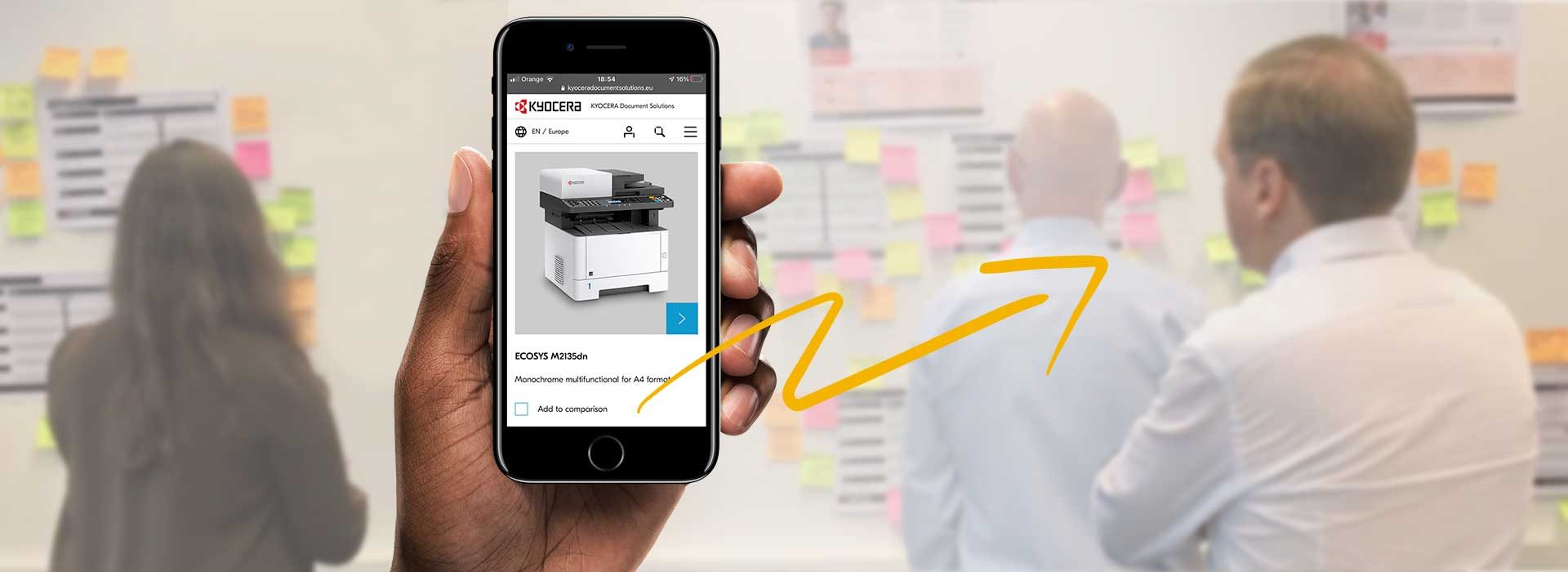

Kyocera Document Solutions are a global business spearheading change in a sector experiencing disruption from new technologies and ways of working.
Traditionally selling printing machines for the office, their products have evolved to meet the demands of document management. More emphasis is now required on security, AI and cloud storage.
With the shift from hardware to software, Kyocera Document Solutions were re-evaluating their marketing. There was a desire to move from product to customer-focussed propositions. At the same time, a tired web platform, was due for replacement with the latest version of Adobe Experience Manager.
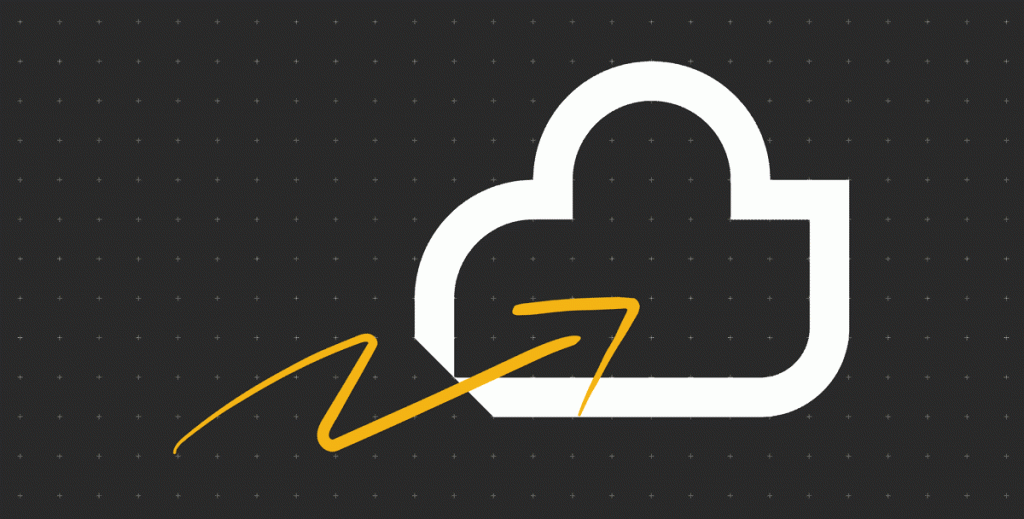
As part of the core team that put together the pitch for Kyocera’s business, I was responsible for defining the vision for what a new customer-centric web platform, covering 19 European markets could look like.
The picture we painted was based on insights drawn from a series of desk-based research activities and a handful of interviews with people responsible for managing office machines and document management workflows.
The vision was illustrated in a couple of videos based on use case scenarios and showed how we would harness the capabilities of AEM to deliver tailored content based on user location, sector and stage in the purchase cycle.
With our winning pitch securing the business, we could expand on our initial research rather than start from scratch.
Nevertheless less there were many more activities to ensure we gathered business and customer requirements across multiple markets and that technical integration with existing systems, such as CRM and PIM, provided faultless efficiencies and seamless experiences for Kyocera personnel and customers alike.
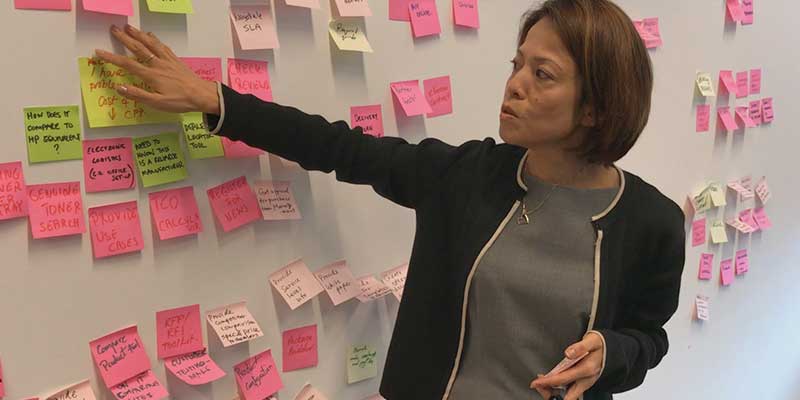
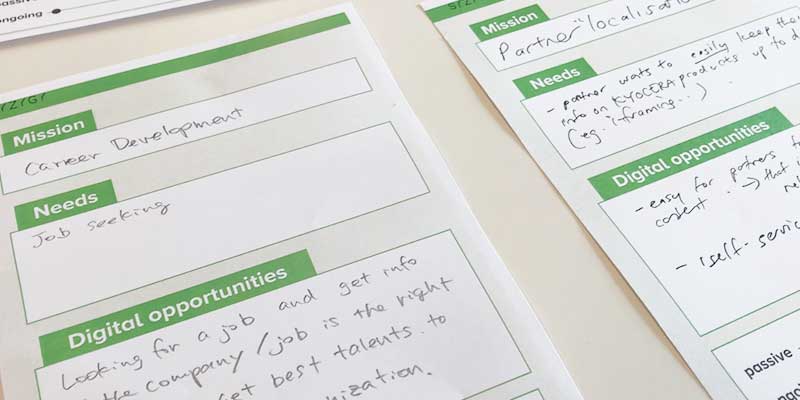

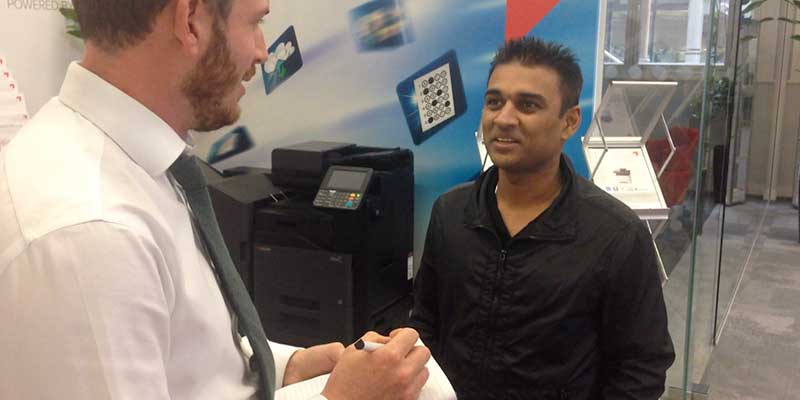
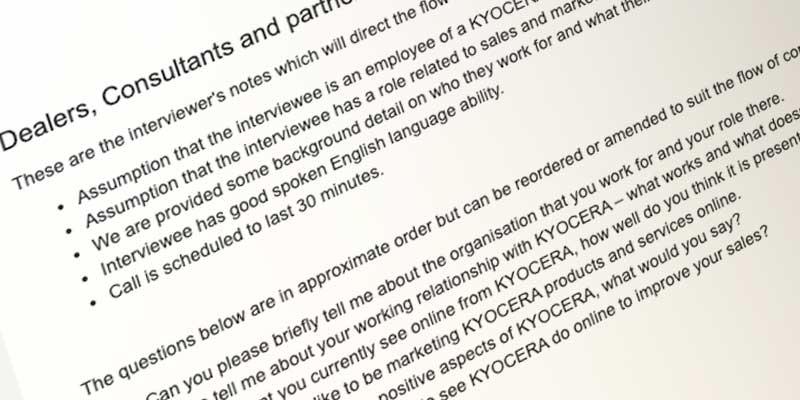



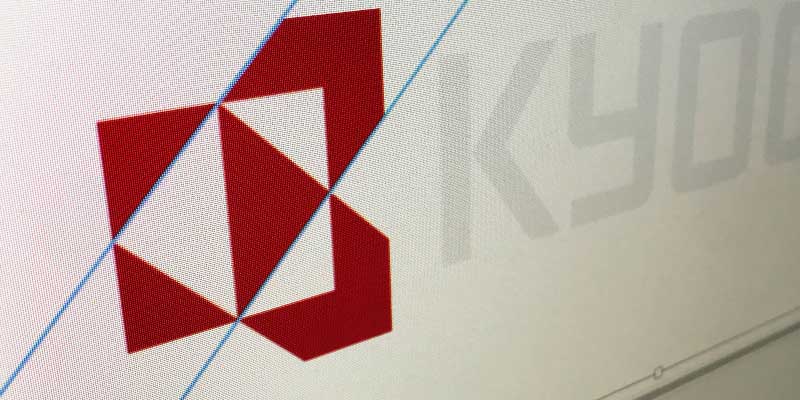
Confluence was the hub for project documentation. Notes, recordings and photographs of workshop walls were filed and expended on over time. There were a number of UX ‘deliverables’ on the back of discovery. These included a set of personas and associated user journeys that would be referenced by the team throughout envisioning and remain available for subsequent projects and initiatives.
The requirements, based on business and user needs, were also formalised and prioritised, with an MVP agreed for launch.

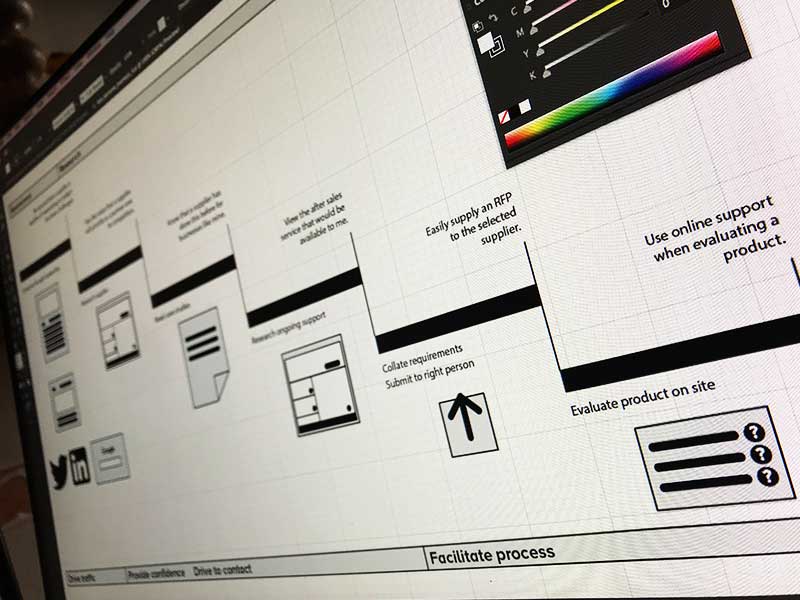
The new platform would deliver content that addressed the needs of modern businesses. Knowledge sharing through stories, case studies and reports would lead customers to the hardware and software products and solutions, along the way reinforcing the Kyocera commitment to quality and service.
The change of emphasis in the proposition required a complete revamp of the site IA. The site needed to be designed to answer questions, provide evidence, maximise engagement where necessary and drive prospects towards contact. It had to accommodate the missions of different personas.

I wrote a set of experience principles for continued reference. Every component, page template or sequence of pages would work to principles, such as progressive disclosure, jargon-free language and no dead ends.
A combination of our journey mapping and content activities in the discovery phase allowed us to draft a site map. We then created a set of cards representing the sections and topics in the site map and arranged card sorting sessions throughout Europe.
To accompany the PDF of cards, I made a film explaining how to do the card sorting and record results. Optimal sort and Tree Jack were used to subsequently revise and test a progressed site map and proposed navigation labelling.
In parallel, we started working in a room of white walls to rapidly visualise elements of our journeys. These sketches helped us develop patterns and identify reusable elements that would be designed as AEM components. As each fledgling component found its place in our draft library we would sense check it with the requirements list and refine our thinking as necessary.
The development team were in Warsaw and we were in London. Each day we had a session to share progress and align our ambition with the realities of an AEM MVP. Our goal was to use as little bespoke code as possible and maximise out-of-the-box AEM capabilities.
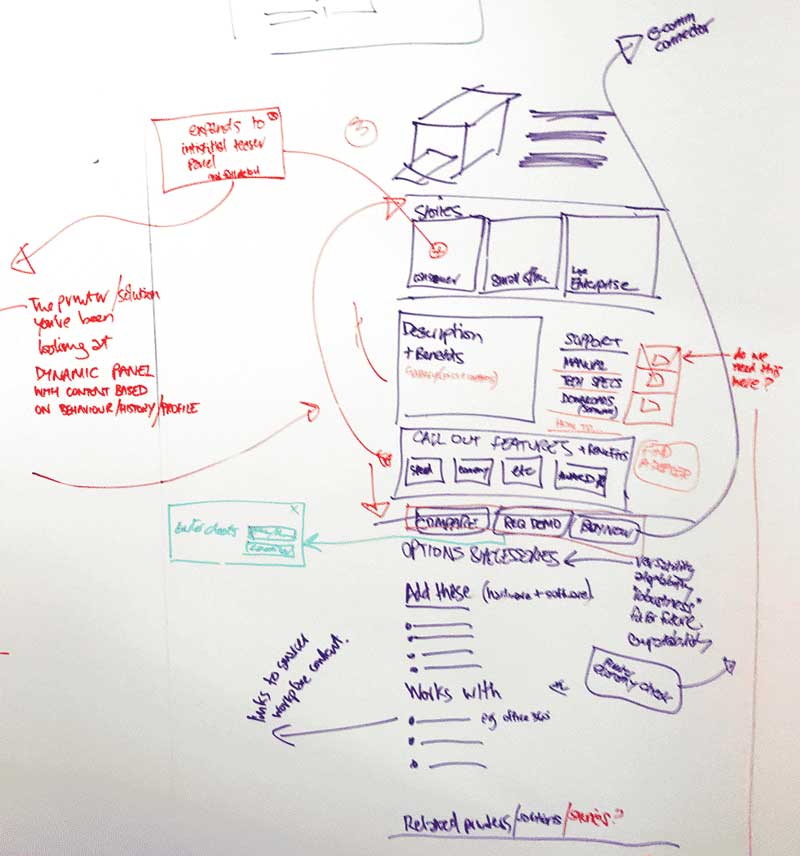
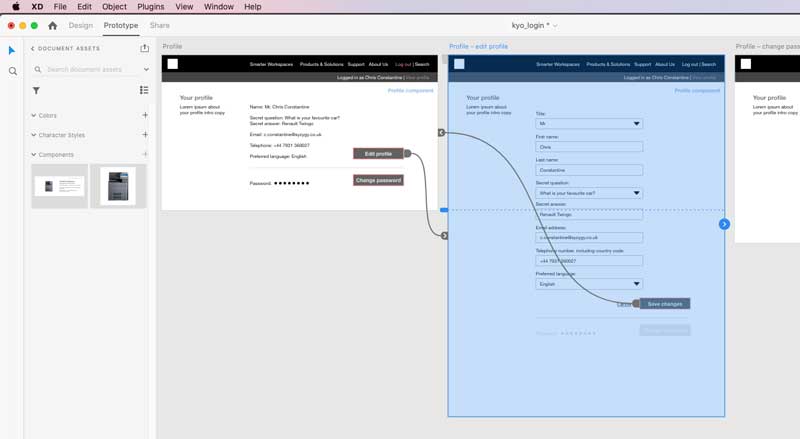
Designs progressed from the white wall to Adobe XD and an ability to test our thinking as a series of click-through component sequences available online for collaborative feedback. When a component reached an agreed state it was formally documented in Confluence as a static annotated wireframe and appended with links to clickthroughs, visual designs and video files showing animations such as load sequences and transitions.
Page templates were identified and designed with fixed, mandatory and optional components. Again, these were first composed and tested internally as low-fi designs in Adobe XD. Then visually designed as page layouts in Sketch and imported into InVision for user testing.
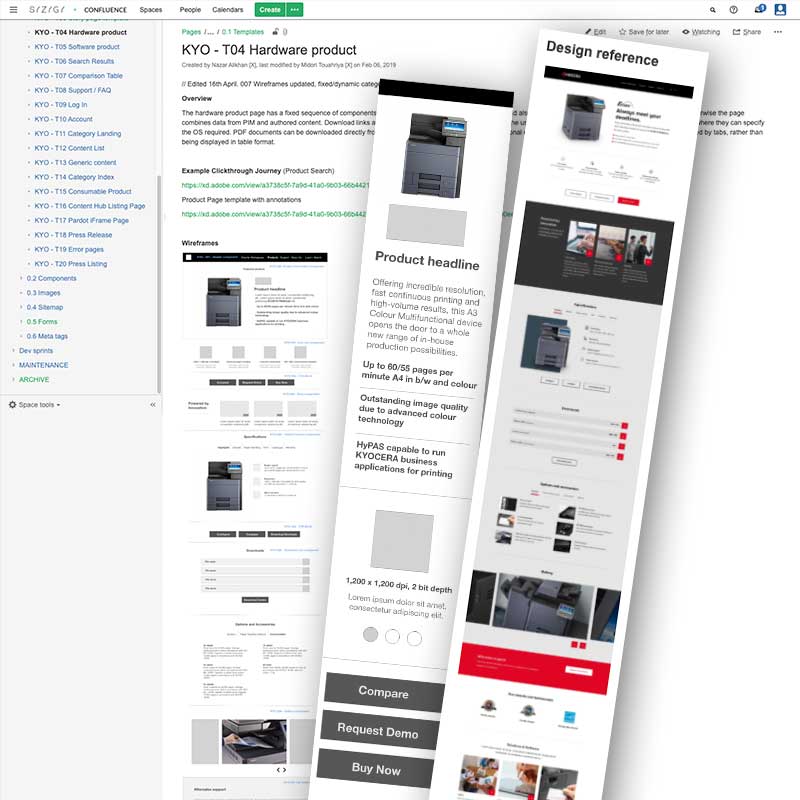
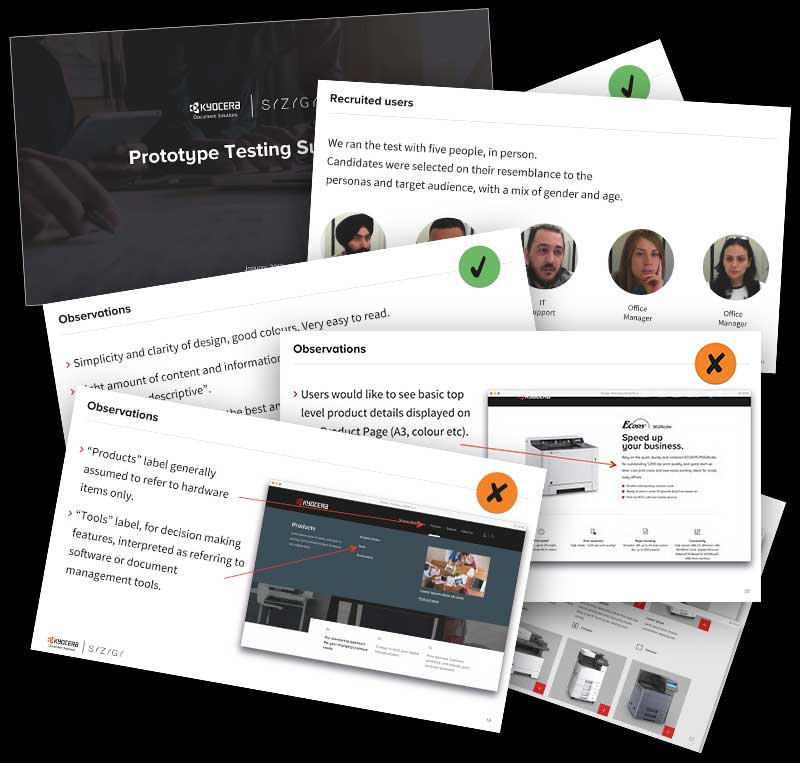
We recruited a combination of agency staff, and people matching the personas from other businesses in our building. Moderated sessions were set up to test accomplishment of a series of tasks and journeys.
Adobe XD prototypes were fashioned for site structure, navigation labelling, page content and visual appeal. Each session was recorded for later review and findings were folded back into our designs.
At key points throughout the project we delivered presentations to key stakeholders and client groups. This provided progress reports and maintained buy-in from those who would be managing the new platform and allowed them to plan for their local market roll-outs. It also provided us with opportunities to talk to more stakeholders and gauge the level of training that we would need to deliver for the new platform.
The European ‘group’ site and the UK ‘market’ site were the first to go live, both being in English. From here, roll-out across other markets proceeded. Localisation for each market included translation of master content and adaption of product lines and specifications, most of which was handled centrally.
Kyocera Document Solutions now has a platform where campaigns and content can be pushed to markets for optional or mandatory adoption. A standardised structure with governance in place enables efficient marketing and management of assets such as printer drivers and documentation.
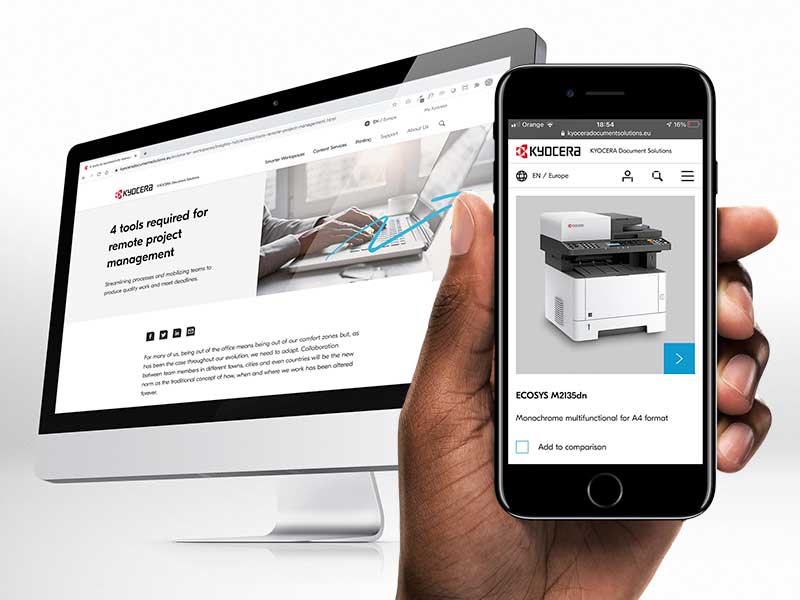
With the platform integrating with authentication, sales and marketing systems, Kyocera can provide a seamless cross-channel experience based on a 360º view of customers.
Moreover, the platform puts the needs of the customer at the centre, providing a simplified user interface that delivers engaging content and resources for research, purchase and ownership.